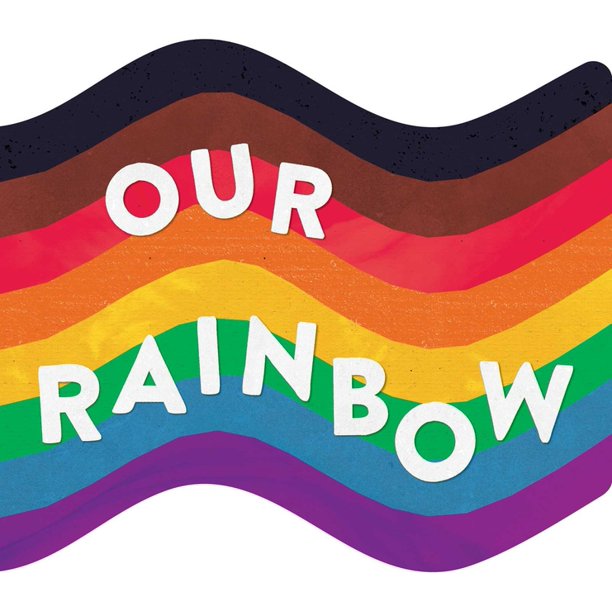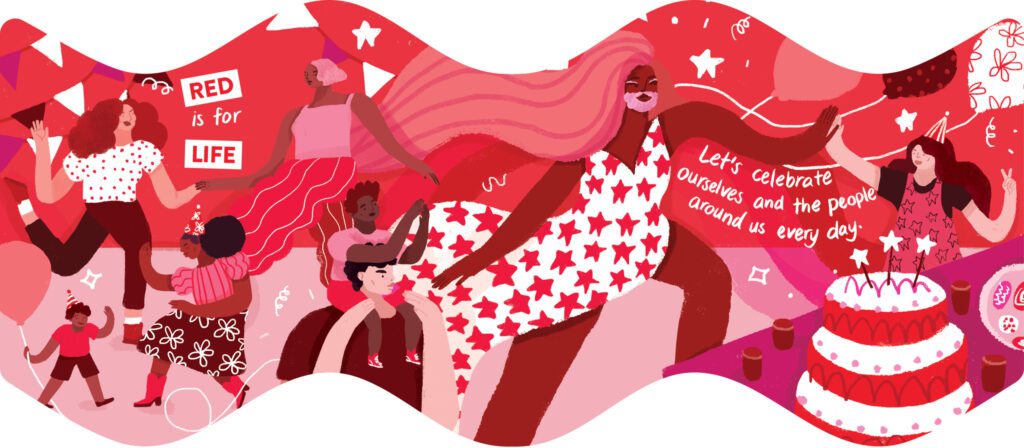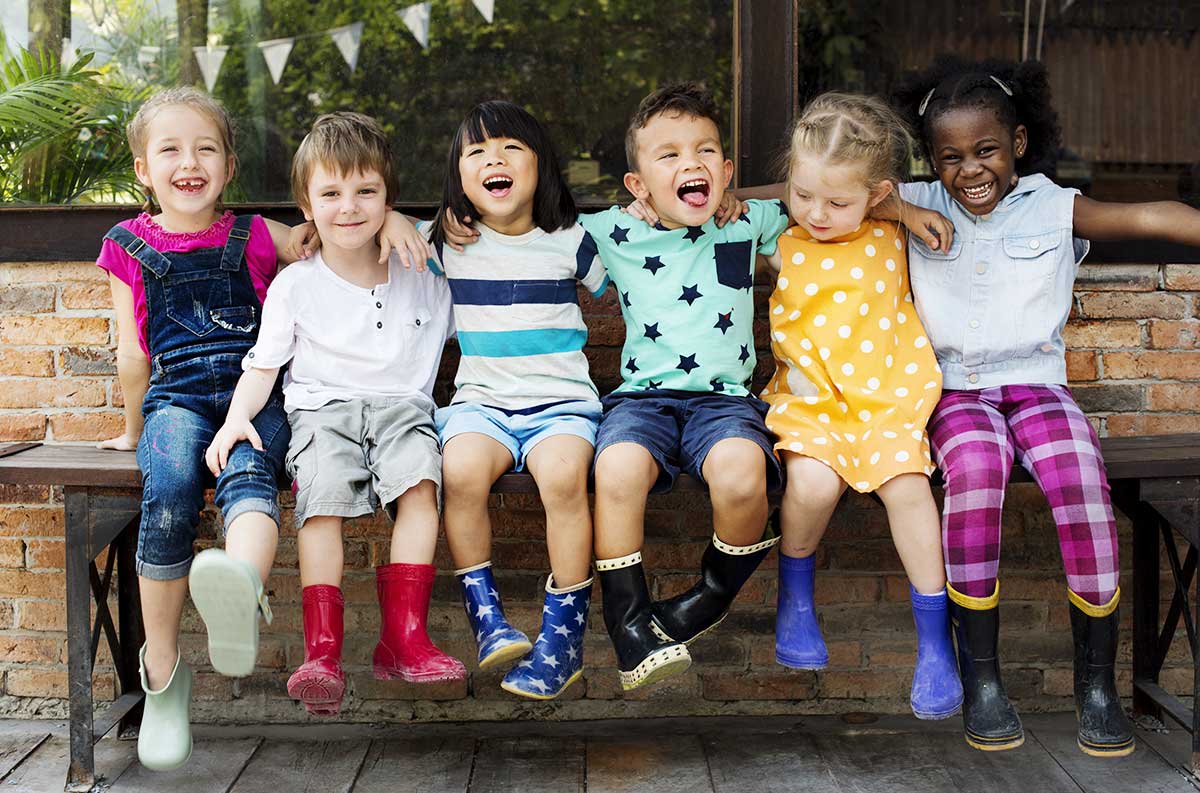
Inclusive Children's Book Teaching Guide
Our Rainbow
What is this book about?
In this bold and beautiful board book, children will learn about the colors of the iconic Pride flag.
Published in partnership with GLAAD to promote LGBTQ inclusivity and acceptance, this book is based on the colors of the Philadelphia Pride Flag, which includes brown and black to acknowledge and celebrate the importance of LGBTQ+ people of color.
Red, orange, yellow, green, blue, purple, black, and brown . . .
These are the colors of our rainbow flag. Do you know what they stand for?
With easy-to-understand language and colorful illustrations, this book teaches young children about the meaning behind the Pride flag's colors and the simple acts of kindness that can brighten our world.
Our Rainbow concludes with a Pride celebration in a park where many different characters gather with friends and family.
Who is depicted in this book?
- LGBTQ+ led families
- Children or adults who are/may be LGBTQ+
- Children or adults who transcend gender stereotypes
- Diversity of identities (ability, race, ethnicity)
What early childhood themes and concepts does this book explore?
- Colors and their connections to concepts such as emotions and actions
- Different types of families
- Ways to celebrate (sing, dance, share meals)
- Ways that humans show love and care for one another, their community and the world
How does this book support anti-bias education?
Our Rainbow can be used, along with other texts, to represent and affirm diverse people and families to all children. Teachers should encourage children to build and show awareness and acceptance of different kinds of families beyond their own and notice people who transcend gender stereotypes.
Depending on how the book is shared or used—and the developmental level of the children—Our Rainbow may be used to support the following core goals from the book, Anti-Bias Education for Young Children and Ourselves:
Identity—Teachers will nurture each child’s construction of knowledgeable and confident personal and social identities so that children will demonstrate self-awareness, confidence, family pride, and positive social identities.
Diversity—Teachers will promote each child’s comfortable, empathetic interactions with people from diverse backgrounds so that children will express comfort and joy with human diversity, use accurate language for human differences, and form deep, caring connections across all dimensions of human diversity.
How can this book be used to meet early childhood learning standards?
For all ages
Use Our Rainbow to meet early childhood literacy standards
For children from birth to age three
Teaching suggestion: Point out the colors, familiar objects, people, and actions featured in the book. Model different words for parents and identify different types of families.
What Illinois Early Learning Guideline does this meet for children from birth to age three?
Developmental DomainCognitive Development
Standard: Concept DevelopmentChildren demonstrate the ability to connect pieces of information in understanding objects, ideas and relationships.
Indicators for children:
- Begins to identify and name objects and people (16 –24 months)
- Begins to identify characteristics of the object, such as “red ball” (16 –24 months)
- Identifies characteristics of objects and people when named, such as colors (21–36 months)
For preschoolers (ages three to five)
Teaching suggestion: Point out and model ways that people play together and celebrate, such as dancing, playing, hugging, and sharing a meal.
What Illinois Early Learning Guideline does this meet for children from birth to age three?
Developmental DomainLanguage Development, Communication and Literacy
Standard: Early LiteracyChildren demonstrate interest in and comprehension of printed materials.
Indicators for children:
- Points to familiar pictures and actions in books (16 to 24 months)
- Recites part of book from memory (21 to 36 months)
Teaching suggestion: Encourage the children to notice and discuss similarities and differences among the families depicted in the book.
What Illinois Early Learning and Development Standards does this meet for preschoolers?
Social Studies Standard18BDevelop an awareness of self within the context of family.
Benchmark 18.B.ECa:
Understand that each of us belongs to a family and recognize that families vary.
Teaching suggestion: Encourage the children to notice and discuss human diversity, including skin color. Probe their assumptions about gender expression and expand their ideas of how gender “looks” by discussing the children in the book and the ways that they express and enjoy themselves.
What Illinois Early Learning and Development Standards does this meet for preschoolers?
Social Studies Standard18AExplore people, their similarities and their differences.
Benchmark 18.A.ECa:
Recognize similarities and differences in people.
Teaching suggestion: Compare this book with another book displaying families and/or the colors of the Rainbow flag, such as Pride Colors by Robin Stevenson or Rainbow: A First Book of Pride by Michael Genhart. Discuss the ideas and emotions that the colors represent. These ideas can also be carried over into exploratory art using similar colors.
What Illinois Early Learning and Development Standards does this meet for preschoolers?
The Arts Standard26BUnderstand ways to express meaning through the arts.
Benchmark 26.B.ECa:
Use creative arts as an avenue for self-expression.
Teaching suggestion: As you read, stop and ask the children what they see in each illustration that demonstrates the pictured color concept. Since each illustration was created by a different artist, ask the children how the styles of each picture differ.
What Illinois Early Learning and Development Standards does this meet for preschoolers?
The Arts Standard25BDisplay an awareness of some distinct characteristics of the arts.
Benchmark 25.B.ECa:
Describe or respond to their creative work or the creative work of others.
Teaching suggestion: Discuss the concepts of harmony and healing, as well as what these concepts could mean in the classroom (such as recognizing and responding when someone’s feelings are hurt or getting to know and respect others who are different from you).
What Illinois Early Learning and Development Standards does this meet for preschoolers?
Social/Emotional Development Standard31ADevelop positive relationships with peers and adults.
Benchmark 31.A.ECb:
Recognize the feelings and perspectives of others.
See inside this book.

What other resources are available?
Learn more about Pride flags and how to use them as a teaching tool here.
